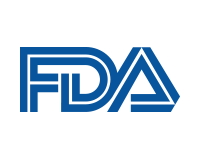U.S. Department of Health and Human Services
Date of this Version
2016
Document Type
Article
Citation
J. Raman Spectrosc. 2017, 48, pp. 736–743.
Abstract
As a result of the increase in the practice of tattooing, the US Food and Drug Administration has identified a need for improved analytical methods to detect the pigments and potential impurities in the inks. Raman spectroscopy allows for nondestructive identification of compounds and is commonly used in art, archaeology, and forensics; however, the technique has only limitedly been applied to the identification of tattoo pigments. In this study, approximately 30 inorganic, organometallic, and organic pigmentswere evaluated with Raman spectroscopy by using 532, 633, and 780-nmlasers. Individual optimization of the instrumental parameters was performed for each pigment in order to enhance spectral quality. This research highlights the need for multiple laser interrogation, as the spectra of some pigments were difficult to obtain by using a particular wavelength due to interferences from absorption or fluorescence. However, by using these multiple wavelengths, all pigments could be identified by their unique spectral features. A spectral library of the pigments was created for each laser wavelength and then challenged with pigments from multiple manufacturers. All pigments were identified correctly, and the method is poised to be an effective, noninvasive means for qualitatively identifying tattoo pigments.
Included in
Dietetics and Clinical Nutrition Commons, Health and Medical Administration Commons, Health Services Administration Commons, Pharmaceutical Preparations Commons, Pharmacy Administration, Policy and Regulation Commons


Comments
U.S. government work.